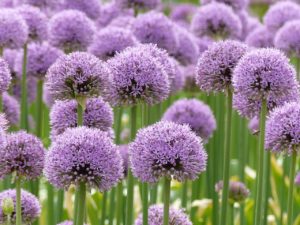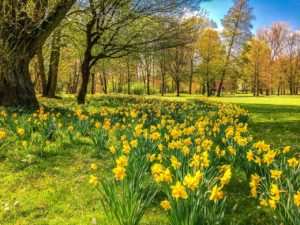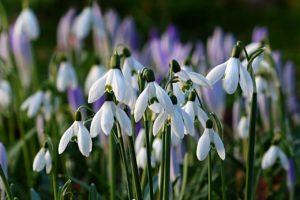Spring Bulbs Add Brilliant Color To Any Garden
Nothing quite says spring tulips, daffodils, hyacinths, crocus and alliums blooming in all their glory. Because they are planted in the fall but do not bloom until spring, bulbs provide delayed gratification for gardeners who cultivate them. The array of colors covers just about every color in the rainbow.
When To Plant Spring Bulbs
It is best to wait for the temperatures to really cool off before planting bulbs. Too early and too warm, they may sprout and never produce blooms. Generally, anytime from mid-October until Thanksgiving is safe. Depending on the weather, some years it is even safe to plant bulbs until Christmas.
How To Plant Spring Bulbs
- Chooses a site that has good drainage. Bulbs will rot if the soil is too wet.
- Dig individual bulb holes or one wide hole to plant groups of bulbs. Digging up the whole bed makes bulb spacing, layering, and soil amending easier. The depth of the hole should equal three to four times the bulb height. For example, dig a 6- to 8-inch-deep hole for a 2-inch-high bulb.
- Set the bulbs in a planting bed or in separate planting holes with their roots or basal plate downward. Space bulbs according to supplier’s recommendations. In general, smaller bulbs are planted closer together than larger bulbs. Fill the planting hole with soil.
- Water the bulbs right after planting to help initiate growth. In mild-winter areas, mulch right after planting to help keep soil cool and moist.
- Each autumn, maintain existing tulip and hyacinth plantings by sprinkling 1/2 cup of 9-9-6 fertilizer per 10 square feet. Daffodils and snowdrops thrive on a 5-10-20 mixture. Three-fourths cup of 5-10-12 mix per 10 square feet works on any type of bulb. First-year bulbs don’t need fertilizer.
Remember, Allentuck Landscaping Co. is always here to help you design, install, construct and maintain you lawn and landscape. Give us a call!
Allentuck Landscaping Co. is Your Residential Landscape Company
Phone: 301-5-515-1900 Email: info@allentucklandscaping.com
At Allentuck Landscaping Co., our mission is to create beautiful environments for people to enjoy. We see landscaping as a way to improve people’s lives.
The Allentuck Landscaping Co. team has been delighting homeowners in Maryland, Washington DC and Northern Virginia for over 28 years with our turnkey approach to landscape design, installation, construction and maintenance. Most companies try to serve many types of customers at the same time; homeowners, shopping centers, office buildings and the list goes on. At Allentuck Landscaping Co., we focus on one customer, you, the homeowner. We have a singular focus on bringing you the best landscape practices, the best customer service, and the best value for your home.
Services Provide – Master Landscape Plans, Complete Maintenance Programs, Plantings, Patios, Walkways, Retaining Walls, Water Features, Outdoor Lighting, Outdoor Kitchens, Trellises & Pergolas, Irrigation Systems, Drainage Solutions, Grading & Sodding. Fire Pits & Fire Places, Spring Clean Ups, Decks, Fences
Areas Served – Chevy Chase, Bethesda, Potomac, Rockville, North Potomac, Darnestown, Gaithersburg, Germantown, Boyds, Clarksburg, Ijamsville, Urbana, Frederick and Washington DC.







